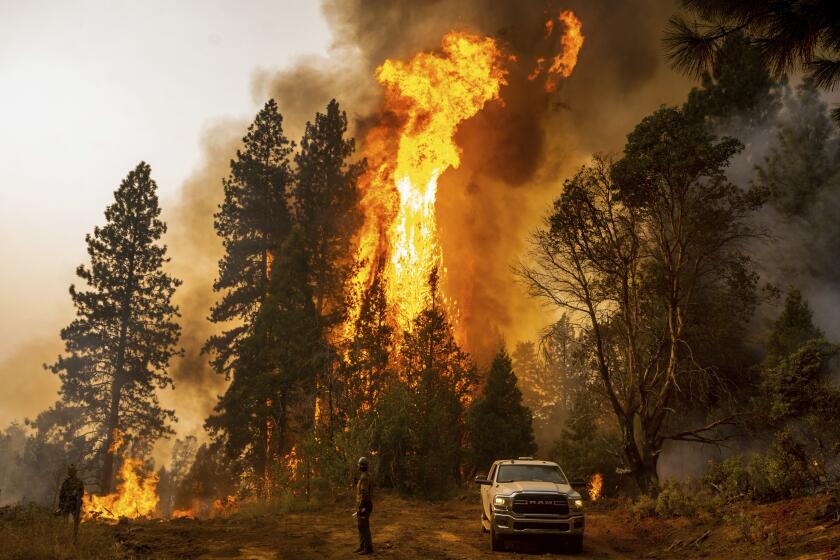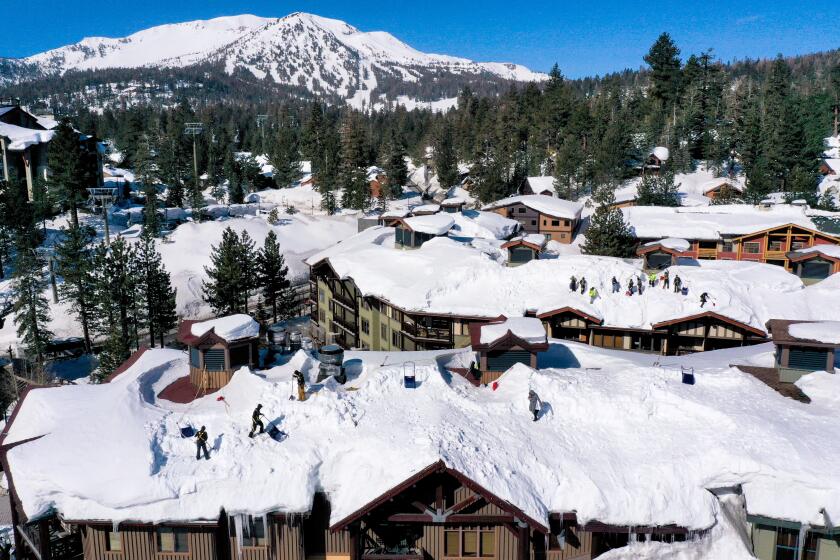Newsom touts $60-million plan for ‘fishway’ along Yuba River; critics say it falls short
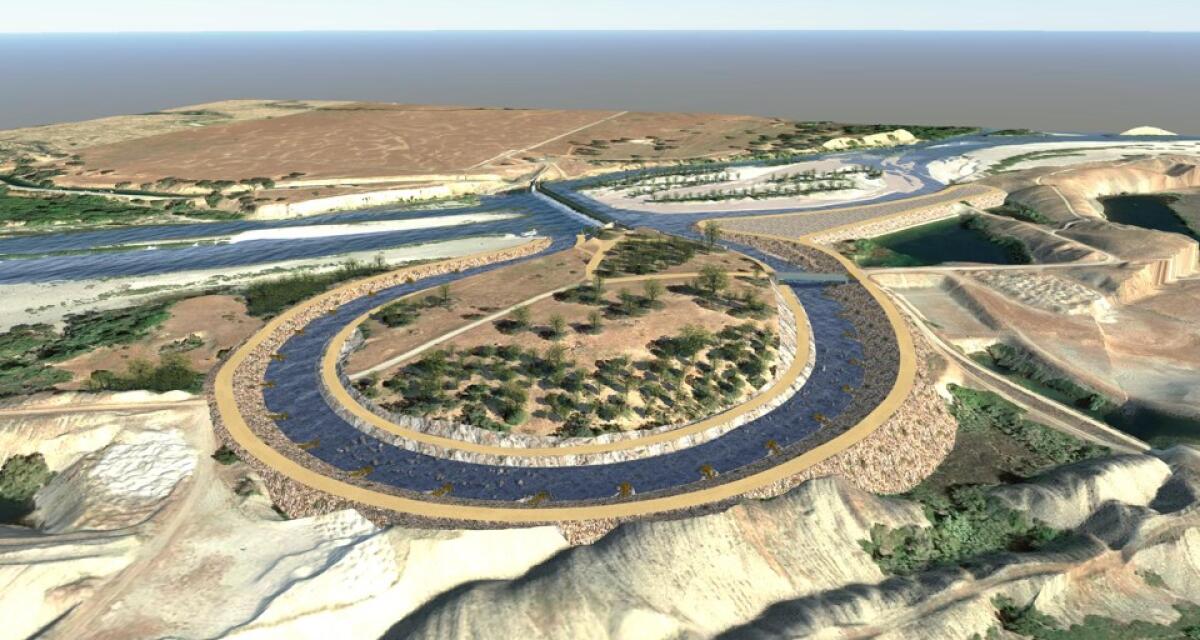
- Share via
Citing the need to boost survival rates for imperiled salmon and sturgeon along the heavily dammed Yuba River, state, local and federal officials have announced a $60-million plan to build a channel that will allow fish to swim easily around a dam that has impeded their passage for more than a century.
Joined by Gov. Gavin Newsom on Tuesday, officials announced that the fishway would bypass the DaGuerre Point Dam, in Marysville, and allow spring-run chinook salmon, green sturgeon, steelhead, and lamprey to access 10 to 12 miles of spawning habitat upstream.
“The fishway at DaGuerre Point will be an unprecedented action to restore habitat and contribute to the recovery of threatened species by providing unobstructed passage to habitat that’s been incredibly challenging for them to access,” said Willie Whittlesey, general manager of the Yuba Water Agency.
The announcement comes as California struggles to adapt to worsening periods of drought punctuated by intense intervals of precipitation — a type of weather whiplash fueled by climate change — as well as amid a growing national movement calling for the demolition of dams, due to their impacts on the environment.
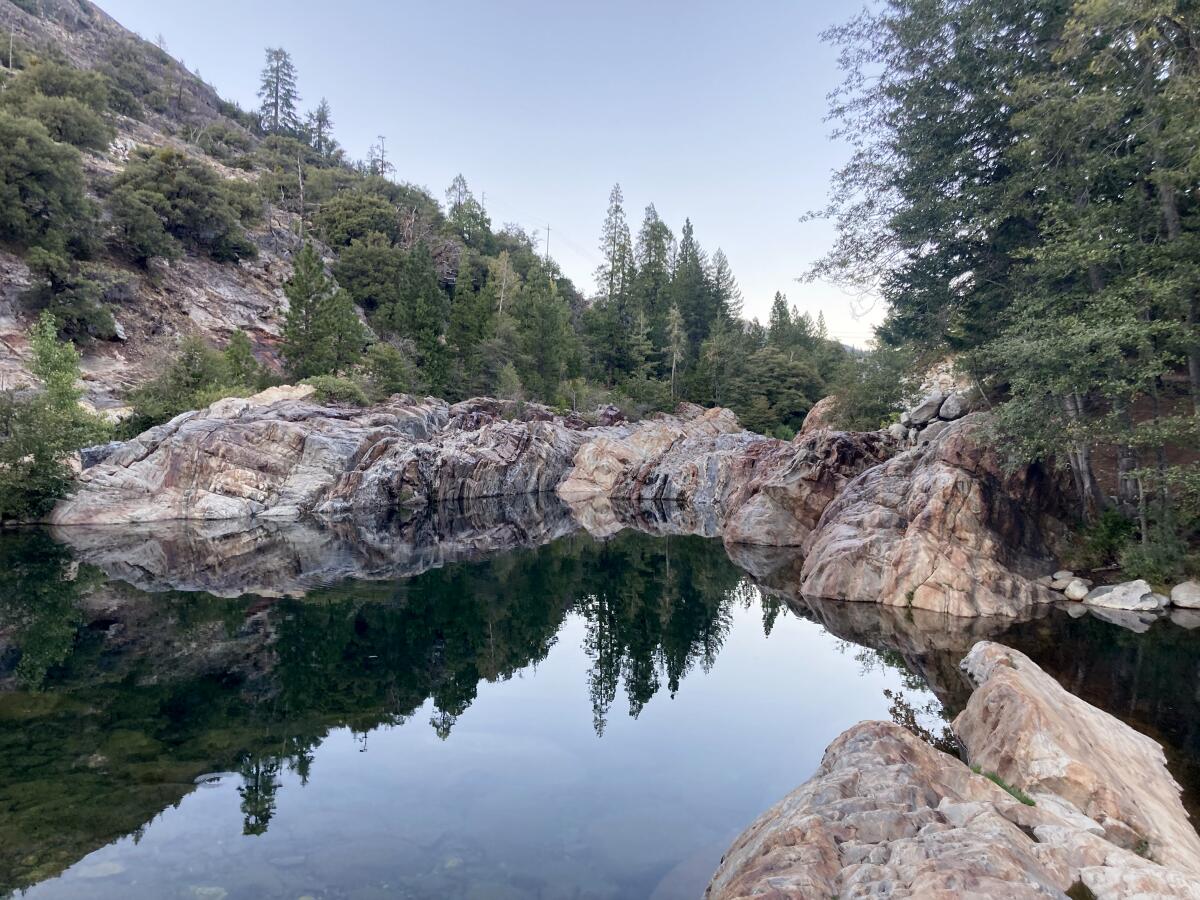
Already, some environmentalists and fishing advocates have blasted the Yuba River plan, saying it was the result of closed-door haggling between government agencies and doesn’t do enough to protect threatened species. Some say that a better solution would be removal of the dam.
“These types of closed-door processes alongside a coalition of active participants are really concerning,” said Meghan Quinn, associate director of river restoration and dam removal at American Rivers. “It makes you wonder what the future of restoration work looks like.”
As dams and global warming push endangered California salmon to the brink, a rescue plan is taking shape — and a tribe pushes for recovering their sacred fish.
The fish bypass will follow the original path of the Yuba River, before the federal government constructed a submerged concrete dam to contain mining debris and sediment in the early 1900s, officials said. In the 1950s, the state installed two new fish ladders — a series of ascending pools that allow some leaping salmon and steelhead to “climb” upstream — but they are outdated and in disrepair, and they block sturgeon and lamprey entirely, officials said.
According to the governor, the state will pay for half of the project, while the rest will be funded by the Yuba Water Agency. The state’s portion will come from $100 million in salmon restoration funding it invested last year, the governor’s office said.
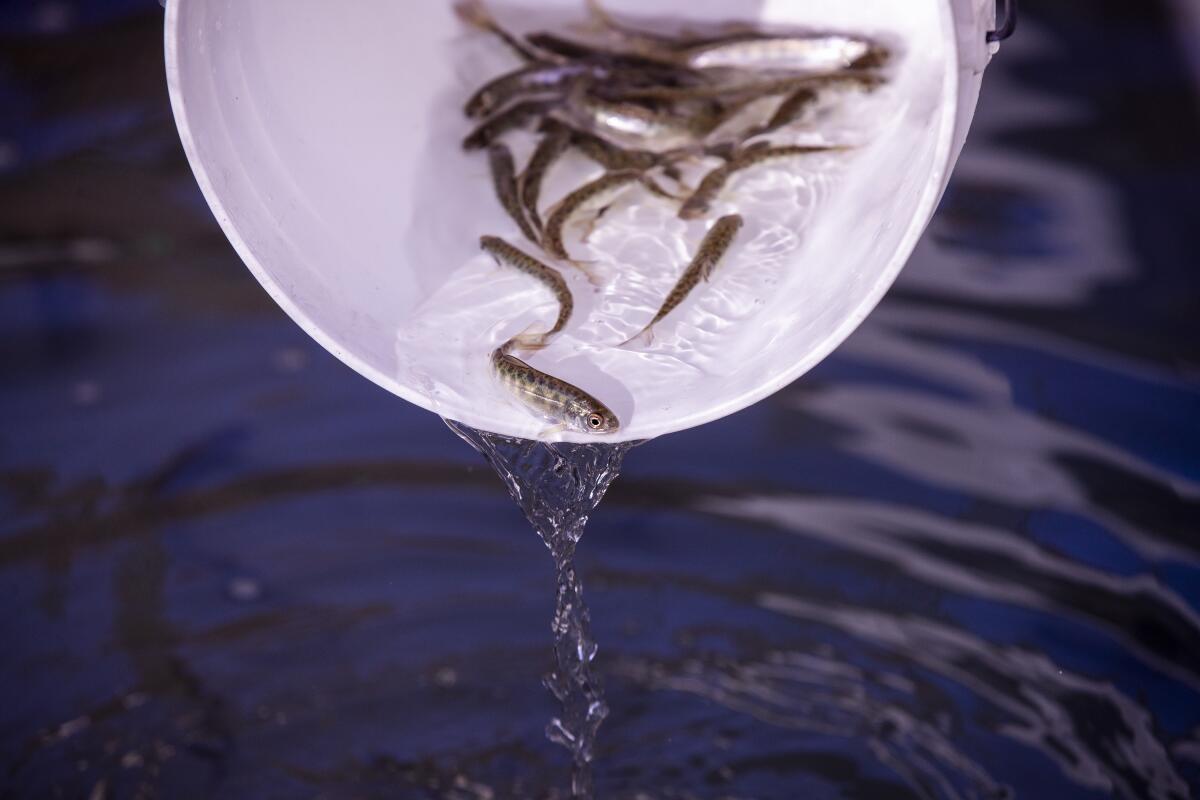
Both the Central Valley spring-run chinook and the population of green sturgeon that are found in these waterways are threatened species. Salmon, in particular, are a keystone species whose health is linked with the health of California’s rivers, said Wade Crowfoot, the state’s natural resources secretary.
But salmon throughout the state have been impacted by 150 years of infrastructure, including 1,500 dams and reservoirs that have enabled California’s economy and population to grow while disconnecting the species from 90% of its historical habitat, he said.
“California has these historic floodplains that have benefited salmon over time,” he said. “In big wet winters like this, historically, salmon would go out on that floodplain, feed, hide from predators and then get nice and healthy and fat to continue their journey to the ocean.” Crowfoot said. “We have less floodplains than we’ve have in the past.”
In addition to the byway, the project calls for the relocation of a diversion that supplies irrigation water, which will be built using the most recent state and federal screening criteria for fish passage.
Officials also announced a pilot program to truck spring-run chinook salmon above New Bullards Bar Dam on the north fork of the Yuba River, where they can access cold water from snowmelt and mountain springs in the face of hotter, drier conditions driven by climate change.
“The upper Yuba is arguably the best opportunity to get a viable, self-sustaining spring-run chinook salmon population,” said Cathy Marcinkevage, assistant regional administrator for NOAA Fisheries Central Valley Office. “And that is critical not just to the recovery of the species but at this point probably to its survival.”
Carbon emissions from fossil fuels and cement production are making western forests drier and more susceptible to wildfire, researchers say.
Although officials characterized the plan as the result of true inter-governmental cooperation, environmentalists and fishing advocates complained that they had been locked out of the decision-making process, even though they were initially invited to participate.
The Yuba Reintroduction Working Group — which included the California Department of Fish and Wildlife, National Marine Fisheries Service and Yuba Water Agency, as well as other agencies and nonprofits like the South Yuba River Citizens League, American Rivers and the California Sportfishing Protection Alliance — had been meeting for years to discuss fish passage in the river.
But the CDFW, National Marine Fisheries Service and the Yuba Water Agency cut a separate deal outside of the working group, said Chris Shutes, executive director or the California Sportfishing Protection Alliance. The restoration plan announced Tuesday is part of a settlement agreement associated with a new Federal Energy Commission license for the Yuba River Development Project, which consists of several dams, reservoirs and diversion tunnels that serve multiple uses including hydropower, according to a term sheet outlining the agreement that was released by the state.
Negotiations over the relicensing had been taking place since 2011, Shutes said. The CDFW, together with the U.S. Fish and Wildlife Service and a consortium of NGOs including the California Sportfishing Protection Alliance, had backed a flow proposal for the lower Yuba River that was significantly more aggressive than that proposed by the water agency, Shutes said.
Inadequate flow is the main problem impacting the salmon population, which has not been doing well since the current flows were implemented under the Yuba Accord in 2008, he said. Increased flow would also have come at a cost to the water agency, which makes tens of millions of dollars a year selling hydroelectric power and surplus water, he said.
“In exchange for commitments by the Yuba Water Agency on fish passage, the Department of Fish and Wildlife is effectively retracting its flow proposal that its staff proposed in the re-licensing and agreeing to the flow proposal proposed by Yuba Water Agency,” Shutes said. “That to me is the most objectionable part of the arrangement.”
“They’re blowing a lot of sunshine on a deal that in my opinion gives up far too much in terms of flow in the lower Yuba River,” he added.
While the CDFW and National Marine Fisheries Service have agreed to the water agency’s flow proposal as part of the framework, the State Water Board has the ultimate authority to mandate conditions of the water quality certification that’s necessary to obtain a FERC license, said Jordan Traverso, spokesperson for the California Department of Fish and Wildlife.
Flying over the Sierra Nevada, teams are using lasers to measure California’s vast snowpack, tracking flood risks as the snow melts.
Other nonprofits that were part of the working group said the fishway announcement took them by surprise.
“We hope that there’s room to rebuild the relationship,” said Aaron Zettler-Mann, interim executive director and watershed science director of the South Yuba River Citizens League. “We still very much see and hope for collaboration in this watershed. But the process here, the closed-door nature of the agreement, is pretty alarming and concerning.”
The term sheet merely provides a framework, and the agencies involved will provide public comment opportunities and meet with tribal governments and NGOs to work toward a final plan, Traverso said.
“We fully recognize that this is the beginning of months of work, including extensive outreach to bring this project to fruition,” she said.
Zettler-Mann hailed the idea of fish being able to pass the dam on their own as “exciting,” but voiced concerns about the “trap and haul” reintroduction plan, saying that research shows it is not effective. He also questioned how the agencies settled on the fishway — studies by the U.S. Army Corps of Engineers in 2003 and the National Marine Fisheries Service in 2014 both found that dam removal was the best option, he said.
Those recommendations were in keeping with a number of efforts to reduce or remove barriers to fish habitat in California’s waterways. In November, federal regulators signed off on plans to demolish four aging dams along the Klamath River. Efforts are also underway to tear down the defunct Matilija Dam near Ojai and Rindge Dam along Malibu Creek.

However, officials said DaGuerre Point Dam is still serving its original purpose of holding back debris and is also used for agricultural diversions.
“Not all dams should be removed,” said Chuck Bonham, director of the California Department of Fish and Wildlife. “Most of our infrastructure is essential and it still serves a useful purpose.”
Bonham acknowledged however that the project follows a long-running dispute over who should be responsible for dealing with problems created by the dam as well as numerous feasibility studies.
Nonetheless, now is the time for a creative solution, he said.
“We’re at a moment in time, with a budget because of the governor’s leadership and the Legislature’s support, when we can actually just bypass all that fighting and build something that’s pragmatic, low cost, low operation and maintenance exposure, and get it done in the next couple of years,” he said. “So we can either keep these fights alive, which California is infamous for on water, or we can sit down and actually do something.”
More to Read
Sign up for Essential California
The most important California stories and recommendations in your inbox every morning.
You may occasionally receive promotional content from the Los Angeles Times.

